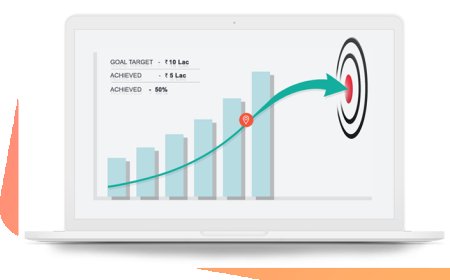What Are the Core Technologies Powering AI Agent Development?
AI agent development is driven by a convergence of advanced technologies that enable software agents to perceive, reason, act, and learn autonomously.

The evolution of artificial intelligence has ushered in a new era of intelligent systems known as AI agentsautonomous, goal-driven software entities that can perceive their environment, make decisions, and take actions without constant human supervision. These agents are already transforming customer service, business automation, personal productivity, and even scientific research. But what exactly makes them tick? What technologies lie beneath their decision-making and autonomy?
In this blog, well break down the core technologies powering AI agent developmentfrom foundational AI models and learning techniques to orchestration frameworks and deployment infrastructure. Understanding these components is key for developers, businesses, and tech leaders looking to build or leverage AI agents effectively.
What Are AI Agents?
An AI agent is a software system capable of autonomous decision-making based on perception, reasoning, and goal-directed behavior. Unlike traditional scripts or chatbots, AI agents:
-
Understand natural language and user intent
-
Execute tasks by interacting with APIs, tools, or other agents
-
Learn from data and improve over time
-
Plan multi-step actions toward achieving defined objectives
These capabilities are made possible by the interplay of multiple advanced technologies working together seamlessly.
1.Large Language Models (LLMs)
At the heart of many modern AI agents lies a large language model (LLM). These models are trained on massive corpora of text to understand and generate human-like language. In 2025, some of the most widely used LLMs include:
-
OpenAIs GPT-4.5 and GPT-Next
-
Anthropics Claude 3.5
-
Googles Gemini 2
-
Metas LLaMA 3
-
Mistral and Mixtral (open-source)
Key Capabilities for Agents:
-
Natural language understanding (NLU): Comprehend user prompts, queries, and context.
-
Text generation: Craft responses, summaries, emails, or scripts.
-
Reasoning and planning: Break down complex instructions into actionable steps.
-
Few-shot and zero-shot learning: Perform new tasks with minimal training examples.
LLMs empower agents to act conversationally, interpret ambiguous inputs, and dynamically generate content.
2.Natural Language Processing (NLP)
While LLMs are a powerful subset of NLP, classical NLP techniques still play a major role in building intelligent agents. These include:
-
Tokenization, parsing, and part-of-speech tagging
-
Named Entity Recognition (NER)
-
Intent classification and slot filling
-
Sentiment analysis and emotion detection
-
Coreference resolution
Role in Agent Development:
-
Improve understanding of user inputs
-
Extract structured data from text
-
Enable emotion-aware responses
-
Enhance multi-turn conversation tracking
Together, NLP and LLMs form the linguistic engine of most AI agents.
3.Machine Learning (ML)
Beyond language understanding, AI agents often rely on machine learning algorithms to make predictions, detect patterns, and adapt to new data. Key ML technologies include:
-
Supervised learning: Classification (e.g., spam detection), regression (e.g., price prediction)
-
Unsupervised learning: Clustering (e.g., customer segmentation), dimensionality reduction
-
Transfer learning: Fine-tuning pre-trained models on domain-specific data
-
AutoML: Automating the model selection and optimization process
Use Cases in Agents:
-
Predicting user behavior or intent
-
Personalizing recommendations
-
Automating repetitive decisions
-
Detecting anomalies in real-time data
ML enables AI agents to go beyond fixed rules and become data-driven and adaptive.
4.Reinforcement Learning (RL)
For agents that operate in dynamic environments and must make sequential decisions, reinforcement learning (RL) is crucial. RL is a trial-and-error learning approach where an agent learns optimal behaviors by maximizing rewards.
Core Concepts:
-
Agents, environments, and actions
-
Reward functions and policies
-
Q-learning and Deep Q-Networks (DQN)
-
Policy gradient methods
Applications in AI Agents:
-
Game-playing agents (e.g., AlphaZero, OpenAI Five)
-
Robotic process automation with real-world feedback
-
Optimization of marketing campaigns or logistics
-
Decision-making in changing or uncertain environments
Reinforcement learning allows agents to learn from outcomes and refine their behavior over time.
5.Agent-Oriented Frameworks and Orchestration Platforms
As AI agents become more complex, developers need frameworks to design, manage, and deploy them efficiently. In 2025, leading platforms include:
? LangChain
-
Chain LLMs with tools, memory, and prompts
-
Ideal for building chat agents, data retrieval tools, and document QA bots
-
Supports agents that use search tools, APIs, or vector stores
? AutoGen (by Microsoft)
-
Designed for building multi-agent systems
-
Agents can collaborate, delegate tasks, and hold conversations with each other
-
Useful for research, workflow automation, and creative writing
? CrewAI
-
Create teams of AI agents, each with specialized roles
-
Agents can be assigned tools, memory, and personas
-
Perfect for modular workflows and scalable enterprise applications
Features in Modern Frameworks:
-
Role definition
-
Task planning and decomposition
-
Tool calling and function execution
-
Memory and context retention
-
Logging, debugging, and observability tools
These orchestration frameworks turn raw LLMs into functional, goal-oriented AI agents.
6.Tool Integration and APIs
AI agents are only as useful as the tools they can access. To complete real-world tasks, agents must interact with:
-
Databases and CRMs (e.g., Salesforce, Notion)
-
Search engines and APIs (e.g., Google, SerpAPI)
-
Internal tools (e.g., file readers, web scrapers, PDF parsers)
-
Productivity suites (e.g., Slack, Gmail, Trello)
-
Payment and scheduling systems
Using APIs, AI agents can:
-
Fetch and analyze real-time data
-
Automate bookings or purchases
-
Update spreadsheets and CRM entries
-
Control IoT devices or systems
This interoperability turns agents into powerful digital workers capable of real business impact.
7.Memory and Context Management
For AI agents to hold meaningful conversations, remember prior steps, or operate over time, they need memory.
Types of Memory:
-
Short-term (context window): Tracks conversation history and immediate tasks
-
Long-term (external memory): Stores documents, user preferences, or past decisions
Tools:
-
Vector databases (Pinecone, Weaviate, Chroma, FAISS) for semantic search
-
Knowledge graphs for structured reasoning
-
Session management for personalized agents
Memory enables agents to maintain continuity, adapt to users, and reduce repetition, making them more human-like and efficient.
8.Cloud Infrastructure and Deployment Tools
To build scalable and production-ready AI agents, developers rely on cloud-native technologies and DevOps practices.
Key Technologies:
-
Cloud platforms: AWS, Google Cloud, Azure
-
Containerization: Docker, Kubernetes
-
Serverless compute: AWS Lambda, Cloud Functions
-
CI/CD pipelines: GitHub Actions, GitLab CI
-
Monitoring & Logging: Prometheus, Datadog, Sentry
These tools allow developers to:
-
Deploy agents at scale
-
Monitor performance
-
Ensure uptime and security
-
Roll out updates automatically
A robust infrastructure is essential for agents deployed in enterprise or mission-critical environments.
9.Security and Ethical Guardrails
As agents gain autonomy and access to sensitive data or systems, security and ethics become non-negotiable.
Security Technologies:
-
OAuth 2.0, JWT, and API keys for secure authentication
-
Data encryption and access control
-
Anomaly detection and abuse prevention
Ethical Safeguards:
-
Content filters and output moderation
-
Bias mitigation tools
-
Explainable AI (XAI) frameworks
-
Human-in-the-loop systems for oversight
Developers must build AI agents that are not only smart but also safe, fair, and trustworthy.
10.Multi-Agent Communication Protocols
One of the most exciting frontiers in 2025 is multi-agent systems, where different agents work together to achieve complex goals.
Technologies Supporting Collaboration:
-
Message-passing protocols (e.g., JSON, gRPC)
-
Agent negotiation and coordination mechanisms
-
Shared memory and state
-
Role-based agent frameworks (e.g., CrewAI)
In enterprise use cases, one agent may gather data, another analyze it, and a third generate a reportall autonomously.
This agent-to-agent collaboration mimics human teams, opening up a new era of scalable digital workforces.
Final Thoughts
AI agent development is more than just plugging into an APIits the synthesis of several powerful technologies working in harmony. From language models and NLP to reinforcement learning, orchestration frameworks, and secure infrastructure, these technologies enable agents to act intelligently, autonomously, and responsibly.
As we look ahead, the convergence of these core technologies will continue to expand the capabilities of AI agentsmaking them essential components of the modern enterprise, digital economy, and even daily life.
If you're building or adopting AI agents, understanding these foundational technologies is your first step toward success in the agentic future of AI.

































